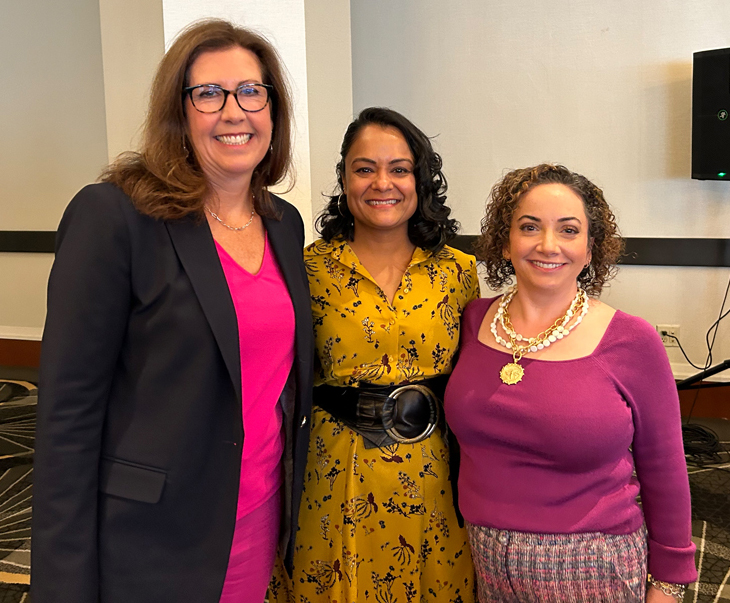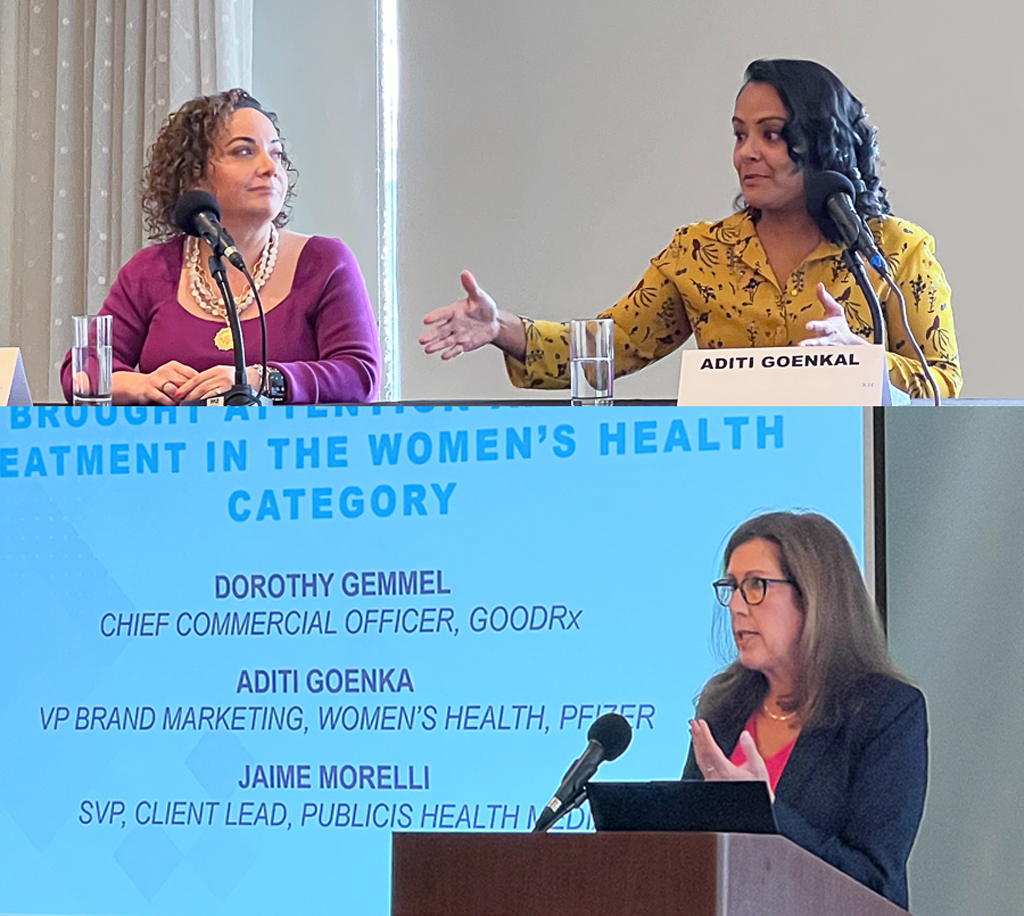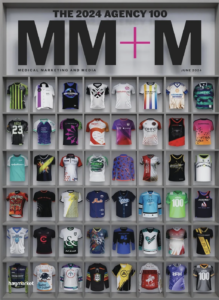At a recent women’s health-focused business summit, GoodRx’s Chief Commercial Officer and President, Dorothy Gemmell, led a panel titled, “From Taboo to Trending: Great marketers discuss how they brought attention to the Women’s Health category.” She was joined on stage by marketing and media experts Aditi Goenka, VP Women’s Health Brand Marketing at Pfizer, and Jaime Morelli, SVP and Client Lead at Publicis Health Media. Mirroring the current media landscape, this conversation did not shy away from complex and formerly taboo topics in women’s health including menopause and endometriosis. According to a recent report by the McKinsey Health Institute, “Women’s health is often simplified to include only sexual and reproductive health, which meaningfully underrepresents women’s health burden.”

Women power the healthcare economy
“We have about 100 million Americans—55% female—visiting the GoodRx platform each year, looking for affordability solutions and credible information to make healthcare decisions,” said Gemmell. “One of our most important user personas is the ‘Chief Household Health Manager,’ and she tends to be between 45-55 years old and manages the healthcare for her entire family.”
Goenka added that “Healthcare is a roughly $4 trillion system that heavily influences the U.S. GDP. Women influence 80% of that, acting as the ‘Chief Purchasing Officers.’ They engage in preventative care nearly twice as often as men and buy 90% of OTC medications. Women engage in healthcare very differently than men—because they want to. They are seeking and demanding answers.”
Yet health economic inequities persist
According to the McKinsey analysis of U.S. copay rates, “American women have an average of $135 more out-of-pocket (OOP) expenses per year than men. Of that, $55 goes to higher copay rates for conditions predominantly affecting women.” And this does not include feminine hygiene and other products subject to the “pink tax.” With treatments across a range of conditions, women are “at a disadvantage due to lower efficacy, more limited access, or both.”
This can result in women spending “an average of nine years in poor health, which affects [their] ability to be present and/or productive at home, in the workforce, and in the community and reduces [their] earning potential.“ At every age, women have higher out-of-pocket expenses for their healthcare than men despite having similar health insurance, according to a 2023 Deloitte report.

“Of the people that come to GoodRx looking for affordability options,” Gemmell noted, “we know that 80% of them have coverage, yet even having insurance still can be a barrier to them not filling their prescription. And we are seeing fertility carve outs, virtual fertility clinics, and other offerings that employers are paying for a greater portion as they strive for more inclusive benefits plans and to improve employee retention. In addition, many pharma brands are working directly with GoodRx to integrate their savings programs and copay cards directly into our platform to support women’s health in areas from fertility to diabetes.”
“Marketers need to think fundamentally differently, Goenka suggested, “because we’ve historically focused on two key audiences, patients, and physicians—but the third pillar is payers and access. We must really understand the payer dynamics. A marketer could create the best campaign and resources, but there’s still a gap if the women they’re trying to serve are not able to access the medication. Because, for example, it can take up to eleven years for a woman to be diagnosed with endometriosis, and so she shouldn’t wait a minute longer for access to treatment. I’ve learned that you can have a willing physician and a willing patient, but you still need a willing payer to support the prescribing decision.“
Changing tactics to change conversations
The panel then pivoted to talk about creating disruptive changes, and the decisions marketers make to reframe national conversations. Morelli, whose client took menopause to the mainstage during the 2024 Super Bowl, disclosed that skeptics asked her, “How could you possibly spend all that money on one spot?” Morelli countered, ”The data was staring us in the face. For any age demographic of women, the top 90 out of 100 programs are sports, and a solid portion of NFL games are in that top 90. It became a ‘no brainer’ that we should place some spots in sports. We reached almost 33 million women in our target age demographic, in one 60-second spot, in one moment.” Gemmell added that she saw a huge spike in traffic to GoodRx of people looking for information about the medication in the minutes and hours following the TV ad.

“My clients have done different types of segmentation and learned that there are groups of women who are a little bit more comfortable and outspoken on health topics like menopause from the beginning,” Morelli continued. “And then there are groups that are less likely to talk about them. So it was really important to give people the right language to talk about it, because dealing with symptoms of menopause is considered a quality-of-life issue for many women.” Goenka added, “Today the people talking publicly about menopause and other taboo topics are people who have big voices and big followings like Oprah, Gwyneth Paltrow, and Naomi Watts. These women are brave enough to say, ‘I didn’t know this, and I have questions.’ I think it’s really helping to destigmatize a lot of the conversations.”
According to McKinsey, “The importance of increasing awareness goes beyond patients. Many doctors are unaware of how diseases can affect or manifest differently in women, so they are unable to provide proper care to many patients.” Goenka underscored this dilemma and said that based on her team’s research with women with uterine fibroids, “Both patients and their doctors are waiting for somebody else to start the real conversation. And so we took that insight into our promotional resources. We tried to simplify the language and give women the words to use to better communicate with their HCPs.”
Lasting lessons for marketers
Morelli’s parting words for marketers are simple but essential: “Trust the data and check your biases. The world changes too quickly,” she said, “to keep relying on the same playbook.” Gemmell added that “the GoodRx platform gives our clients a front-row seat to the aggregate, real-time health behaviors of our massive audience. It helps ground them in what’s happening now, instead of relying only on their experience with previous brands.”
Goenka then offered her closing thoughts: “I would say trust the data but verify. It’s the insight that’s going to drive what we do, and marketing fundamentals still work. Women are not one homogenous audience. We’re not simply defined by our age or demographic, and our health conditions are not ‘lifestyle choices.’”
Click here to watch highlights from the panel discussion.






